#apple seeds contain CYANIDE. NOT ARSENIC
Text
People are being wrong on MY post and I don't like it!!
#apple seeds contain CYANIDE. NOT ARSENIC#we still don't know yet how it arsenic got into the apple juice but it wasn't from the seeds#it's not even the being wrong part it's the how confident many of them are as they say this
7 notes
·
View notes
Note
actually Apple seeds contain cyanide, not arsenic.
-Apple Jucie Anon
Oh shit, you right. That's why centipede pheromones smell like that and or cherries. The cyanide. I got my lethal compounds mixed up. Thank ya, Apple Juice Anon.
@coldchary2468 It's Cyanide, not Arsenic. The apple juice having arsenic in it is just a factory fuck up.
2 notes
·
View notes
Note
To Arsenic is Cool guy: Apple seeds have trace cyanide, apples, and similar fruits as a whole, such as pears, sometimes contain inorganic Arsenic (iA) from soil or pesticides as the trees are quite good at the absorption of it.
yeah i thought that was probably cyanide not arsenic but i couldn't be bothered to google it right then
9 notes
·
View notes
Text
Well-Known and Obscure Toxins: How They Work
Well this is a morbid subject but HEY it’s almost Halloween baby!! I was super curious about what toxins actually do on a molecular level after reading about cone snails. Obviously toxins can kill you, but how?? I wanted to know the grisly details. This is not an exhaustive list, just some types of poison, venom, and other toxic substances I was curious about, so let’s get to it.
Deadly Nightshade
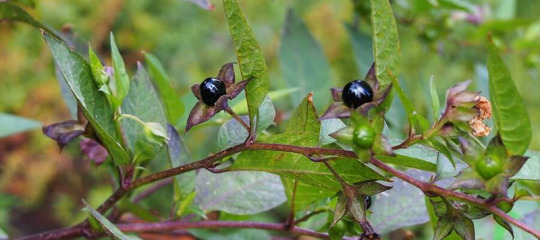
Where is it found? Atropa belladonna grows in Europe, North Africa and Western Asia.
How it works: speeds up your heart and generally fucks with your nervous system. Deadly nightshade contains tropane alkaloids atropine, hyoscine (scopolamine), and hyoscyamine which disrupt the nervous system’s ability to regulate activities such as heart rate, breathing and sweating. It can cause narcosis, paralysis and heart failure as a result. Yikes. But an antidote exists that can reverse these affects if administered in time.
Toxicity: the entire plant is toxic, with roots having the highest toxicity but berries posing the greatest threat to humans because of their appearance. 10-20 berries can kill an adult, and 2-4 can kill a child. Symptoms of mild poisoning include dilated pupils, sensitivity to light, loss of balance, confusion, hallucinations (wild) and convulsions. Doesn’t sound like a good time.
Do not eat the shiny attractive berries!!! (Cows and rabbits and other animals can eat it but humans, dogs and cats...NOT SO MUCH) You can also get toxins on your skin just by touching the plant but this will not kill you.
Totally fun and not morbid fact: during the Renaissance, belladonna was used by women in small quantities to dilate pupils and give a seductive appearance, and this is how it gets its name belladonna, or beautiful woman. Atropa comes from the Greek Fate Atropos who cuts the threads of mortal lives with her shears. Snip snip!
Hemlock
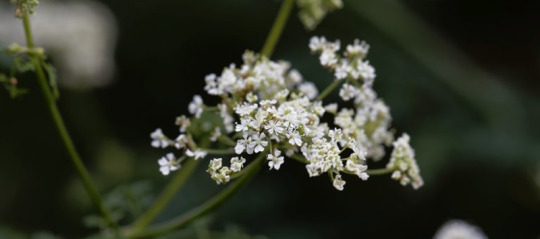
Where is it found? Conium maculatum grows naturally in Europe and North Africa, and has spread to North and South America, Australia and Western Asia.
How it works: stops your breathing. The flowers contain an alkaloid called coniine, which directly affects the nervous system and causes paralysis of respiratory muscles, leading to death from oxygen deprivation. Hemlock poisoning is treated by artificial ventilation for 48-72 hours until the effects wear off.
Toxicity: about 100 milligrams of coniine is fatal to an adult. That’s about 6-8 hemlock leaves, or a smaller dose of the seeds or root. Animals can also be poisoned and killed by hemlock, but luckily dangerous substances cannot be passed into the human food chain from milk or fowl. Similar to nightshade, you can get a non-lethal amount of the toxin on your skin simply from touching this plant.
Basically you’re only gonna get poisoned by this if someone puts it in your tea, because I assume you’re not gonna just go around just like...chomping on pretty flowers. Right? Right?? ok good.
Arsenic
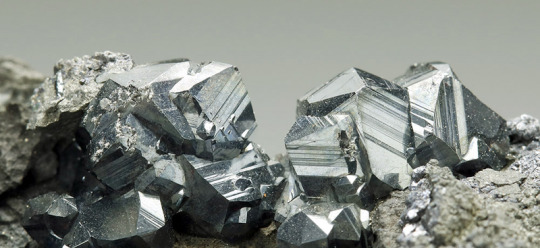
Where is it found? arsenic is a metalloid that occurs often with sulfurs and metals. It can be present in volcanic ash and groundwater, and as a result can be found in low (acceptable) levels in plants and seafood. Good news: it is rare to find arsenic occurring at dangerous levels in nature.
How it works: in high levels, arsenic disrupts ATP production and causes organ failure due to necrotic cell death. This process can last between 2 hours to multiple days. It can also be fatal in lower doses administered over a period of time, and as such, was a popular murder weapon when it was readily available during the 1800s in England. Symptoms such as vomiting and diarrhea don’t immediately alert someone that there has been an attempted murder unless maybe you’re Sherlock Holmes.
Toxicity: google probably thinks I’m a murderer and won’t tell me just how much arsenic will kill a person. COME ON, google!!! it’s for SCIENCE!
Arsenic is no longer readily available for people to just get in large quantities, so that’s a RELIEF.
Cyanide

Where is it found? cyanide is a chemical compound produced by certain algae, bacteria and fungi. It is also found in plants such as peaches, apples, apricots and bitter almonds. A type of bamboo that grows in Madagascar is so rich in cyanide that it would kill humans, but not the golden bamboo lemur for whom this bamboo is a primary source of food!!! You go girl, eat that cyanide bamboo.
How it works: for everyone who’s not a golden bamboo lemur, cyanide disrupts ATP production, affects the central nervous system and heart, and causes histotoxic hypoxia: the inability of cells to take up oxygen from the bloodstream. Antidotes can work if administered in time for lower doses of cyanide.
Toxicity: 200 milligrams of solid cyanide or a cyanide solution, or exposure to airborne cyanide of 270 parts per million is sufficient to cause death within minutes. Um, YIKES. Really, cyanide was already scary enough as a solid before nature went and made it into a gas that kills upon inhalation. DEEPLY uncool.
Murder mystery writers: slip belladona or arsenic into your literary victim’s tea. Belladonna is sweet, arsenic is tasteless, but cyanide has an acrid and bitter taste.

Fun (well, not fun) fact: if you eat 200 apple seeds (about 40 apple cores) you will receive a fatal dose of cyanide. So like, don’t do that. An apple a day keeps the doctor away and is completely safe, but 40 apples apple cores a day WILL KILL YOU
Vampire Bat Saliva
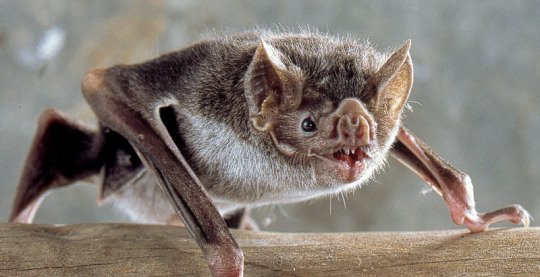
Where is it found? Vampire bats are found in the Americas.
How it works: a toxic substance called Draculin (I’m serious) in the saliva of vampire bats acts as an anticoagulant by inhibiting an enzyme involved in the coagulation pathway.
Toxicity: vampire bats are indeed venomous and toxic, but they are not at all lethal. It just sorta sucks if you’re being bitten by a vampire bat, but you’ll live. Unless that bat has rabies. Vampire bat saliva also contains an analgesic, meaning the bites are almost completely painless. SO THAT’S SOMETHING
Cobra Venom

“hello do you have a moment to hear about cell death?”
Where is it found? Many species of cobra are found throughout Africa, Southwest and Southeast Asia.
How it works: most cobra venom includes neurotoxins that cause paralysis as well as cytotoxins that cause necrosis and blood coagulation. blood coagulation can happen in minutes.
Toxicity: many types of cobra venom are treatable, but may leave disfigurement from necrosis. If this isn’t scary enough for you, just know that spitting cobras can reach 2.7 m (8.9 ft) in length and like to aim for the eyes.
But you’d still rather be bitten by a cobra than THIS deadly mofo:
Venom of the Inland Taipan
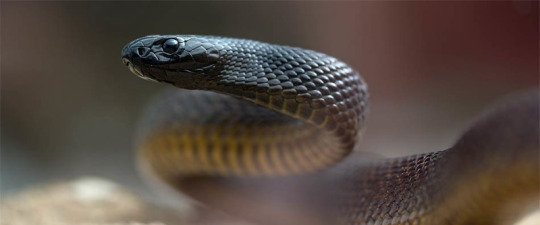
Where is it found? the inland taipan is the most venomous snake in the world and lives, YOU GUESSED IT, in Australia, ie the place where everything is designed to kill you. Evolution decided it can reach 1.8 meters (5.9 feet) with a maximum length of 2.5 meters (8.2 feet), which I think everyone can agree is a dick move on evolution’s part. Take it back, TAKE IT BACK!!!!!
How it works: the venom contains neurotoxins, hemotoxins, and myotoxins AND an enzyme to increase absorption of the venom. Basically it causes paralysis, blood coagulation and muscle damage, because one of these things wasn’t enough apparently. Antivenoms against Australian venomous snakes exist but are least effective against the venom of the inland taipan.
Toxicity: the inland taipan’s venom has a murine LD50 value of 0.025m/kg. This means there is a 50% chance that .025 milligrams per kilogram of weight will cause death. It’s bite contains enough venom to kill at least 100 adult humans. But GOOD NEWS! the inland taipan lives in such remote places that it rarely comes in contact with people. Other slightly less venomous snakes are therefore responsible for more deaths. ....So that’s...still terrifying. just don’t go into the woods in Australia FOR THE LOVE OF GOD
What’s deadlier than the deadliest snake in the world, you ask?
Tetrodotoxin

Where is it found? tetrodotoxin is found in several animals such as pufferfish, moon snails and the small but deadly Australian blue ringed octopus (DAMMIT Australia)
How it works: blocks sodium channels. This prevents normal transmission of signals between the body and brain, causing loss of sensation, paralysis and inability to breathe. Fun!!! Don’t pick up the frickin evil little octopus
Toxicity: more powerful than cyanide, that’s for sure, about a thousand times more powerful in fact. the oral median lethal dose (LD50) for mice as 334 micrograms per kilogram. Fatal pufferfish poisoning result in death in about 17 minutes. The blue-ringed octopus, however, carries enough venom to kill 26 adult humans within just a few minutes. There is no anti-venom.
What’s worse than that, you ask? Ah, you shouldn't have asked.
Conotoxin
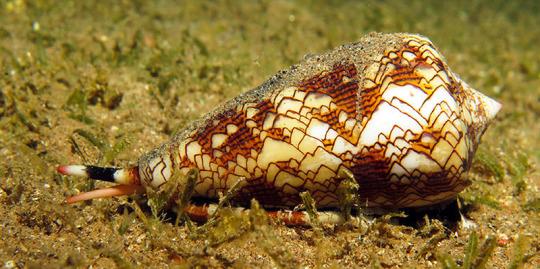
Where is it found? Cone snails are found in the Indo-Pacific, the Cape of South Africa, the Mediterranean, and even southern California. Smaller species are not that dangerous. Larger species, however...
How it works: paralysis within minutes. cone snails have multiple harpoons to administer venom to prey (or unsuspecting humans). the harpoons deliver a venom that has HUNDREDS of different types of toxins, each targeting different nerve channels or receptors. Some cone snail venom even includes pain-reducing toxins. These pain reducing toxins can be 100 to 1,000 times more powerful than morphine. How THOUGHTFUL.
Toxicity: vastly more potent than tetrodotoxin. the oral median lethal dose (LD50) for mice is is 10 to 100 micrograms/kilogram. So like, GOOD LUCK WITH THAT LOL
Ricin
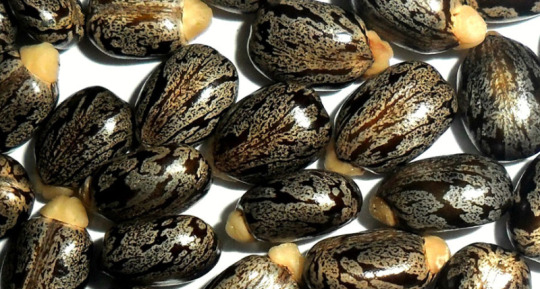
Where is it found? Ricin is obtained from the beans of the castor oil plant.
How it works: inhibits protein production and results in organ failure, respiratory failure and circulatory shock.
Toxicity: The median lethal dose (LD50) of ricin is around 22 micrograms per kilogram of body weight. If that sounds bad just wait till you hear about poison dart frogs 😭
VX
Where is it found? Nowhere in nature. VX is synthetic. It is an oily amber colored liquid in its natural form, was first developed as a pesticide and later for chemical warfare. It is considered a weapon of mass destruction and is banned under the Chemical Weapons Convention of 1993.
How it works: causes stimulation and fatigue of muscarinic and nicotinic ACh receptors, resulting in violent contractions followed by paralysis and death by asphyxiation.
Toxicity: 7 micrograms/kilogram. this is one of the most toxic synthetic substances on earth. Humans have got nothing on mother nature though...
Batrachotoxin

(This guy is called phyllobates TERRIBILIS. but is his cute little face terrible? noooo.)
Where is it found? in certain types of beetles, birds and poison dart frogs found in Central and South America.
How it works: similar to conotoxin, batrachotoxin interrupts sodium channels. The resulting migration of Na+ ions causes heart failure and paralysis.
Toxicity: The LD50 is around 2 micrograms per kilogram, meaning that an amount the size of two grains of table salt will kill you, and that this is even worse than a cone snail, Ricin, or VX. Batrachotoxin is one of the deadliest alkaloids known. No antidote exists.
Fun frog fact: this was the poison commonly used by the Embera-Wounaan for poison darts, and that’s where poison dart frogs get their name! How...cute.
Botulinum, most toxic substance in the world
Where is it found? made by the bacteria Clostridium botulinum and related species.
How it works: causes Botulism, which if untreated can result in paralysis and respiratory failure by preventing the release of the neurotransmitter acetylcholine. Botulinum is used in very very very VEEEEEEERY small amounts in Botox, in case you ever needed reasons NOT to do Botox lol.
Toxicity: the lethal dose of 1.3–2.1 nanograms per kilogram in humans. of any toxin natural or synthetic, this is the deadliest known. However!! Actual good news this time: treatments involving antitoxin therapy and intubation are very successful and mortality from Botulism is extremely low. Yay!

More good news: toxins have been instrumental in medicinal breakthroughs throughout history and continue to be vital to modern medicine. A drug for diabetes was recently synthesized from Gila monster venom: it increases the production of insulin when blood sugar levels are high. A painkiller has been developed for chronic pain patients that is derived from a component of the venom of our friend, you guessed it, the cone snail! These are just two examples of toxins being used in medicine, and a lot of research is still being done because face it: we still don’t know a lot about how our bodies work. Paralyzing agents are extremely important to our understanding of the body and the development of non-opiate non-addictive painkillers because of how they disrupt signals between nerves and the brain.
Long story short: don’t eat nightshade and stay OFF AUSTRALIAN BEACHES and you should be just fine.
Oh and your tea is getting cold ;)
#my posts#interesting#science#poison#venom#nightshade#hemlock#cobras#vampire bats#arsenic#cyanide#tetrodotoxin#conotoxin#ricin#vx
20K notes
·
View notes
Text
Ace Sex
I laugh:
Would you knock it off?
I can’t tell if you’re being serious
with the way you’re comically
bumping your hips against me,
while I put the dishes away.
You say “oh babe”
like a nineteen-thirties radio host,
every third thrust, and I have to catch myself
from hitting my nose on the cabinets
and it’s sweet and endearing how
you like to make me laugh.
.
Oh, you actually want to?
Okay, I guess. Oh, I mean-- No, no,
It’s not a problem, I mean--
I don’t mind, I mean--
I could, I mean--
I want to, too.
.
No, it’s not that I’m not attracted to you, you know that.
I think we have different experiences with attraction.
Attraction is when I hold your kissable cheeks in my hands
and nuzzle my nose with yours. It’s when you’re working from home,
and I stand behind you and braid your long dark hair
until you’re adorned with every twisty in the house.
It’s when you bring me apple slices and a black coffee
while I do my graduate course work, then collapse next to me
on the couch, leaning, with as much contact as possible.
It’s when I fall asleep in your lap, watching Love Island,
you stroke my arm and think,
This girl has everything she needs.
.
I kiss you and my heart flutters
I try not to smile, because it’s hard
to kiss and smile at the same time.
Our lips disconnect.
.
You bite the cable of muscle in my neck,
I’m not sure where to look, so I close my eyes,
holding back a laugh.
It feels like the “aaaa!” when the plot thickens,
or the highest point on the rollercoaster,
when you unwittingly look down.
.
I ask if we can take it to bed.
You ask, “Are you sure?”
and “are you okay with that?”
while eagerly vibrating.
you’re like the kid on Christmas morning,
banned to the top of the stairs until I disable the house alarm
and holler, “Looks like someone came!”
I spread my hands in benediction and say, “my love,
I am consenting.” which is different than saying, “I want you.”
You slap my ass on the way to bed,
and doesn’t see me roll my eyes.
.
Writing about sex is almost exactly like
writing out a recipe for biscuits,
and I’ve never really had an excuse to make biscuits.
I know other people love biscuits and love to make them
but I don’t see what’s so super special about
one cup of flour and, however much salt, and, wait,
baking powder, or soda? Well. We’ll see what happens.
And sometimes spices, if you feel like it.
Other people seem to feel like it.
Because for me, it’s not about the biscuits, I don’t care
about the actual biscuits, I care
about the person I’m with-- you, only--
and if you’re happy,
your smile, the indicator. The mess, collateral.
I like the time spent.
I like the little exchanges, the rare sides of us that interact.
I like the joy of making something.
.
Oh, you’re really into this.
I guess my thoughts had wandered.
You whisper something I don't hear, which is okay,
because we have different experiences with attraction
and I’d rather think your thoughts,
and build our narrative in a way that I can tweak and edit,
than hear something that would shatter that illusion,
and strike any splinters of fear into me.
I say “one cup of flour”
and you say “oh, babe.”
I say “teaspoon of salt.”
and you say “you’re so good to me.”
I say “powder or soda?”
and you say “whatever you’re comfortable with.”
.
I wonder why peanuts grow underground, like beets.
But beets are just beets through and through,
while peanuts have a shell, and the good part, inside.
I wonder why cherries grow in twos, sometimes threes.
and why their seeds contain cyanide,
Apple seeds have arsenic, I think. Just a trace.
I wonder why soap is labelled “orange blossom”
instead of just “orange,” and why
it doesn’t taste like either when he puts his finger in my mouth.
I guess “orange” is too Trader Joes
but “orange blossom” is more Trader Jacques
but I still don’t see why that matters.
“Orange” reminds me of the soda, and summers at my Grandma’s house.
Swimming with my siblings and cousins, and that hot black driveway.
“Orange blossom” is a life I’ll never live in the south of France,
but I don’t know a lot about the south of France, so maybe Spain,
if oranges blossom in Spain. I should know more about Spain
Seeing as I was a Spanish minor in college but it was mostly
Central and South American Spanish, and I don’t know
if oranges blossom there, either.
Maybe I know enough about Spanish-speaking countries,
I just don’t know enough about oranges.
I’ll look it up after this.
I wonder if I have an attention deficit.
My brother has an attention deficit,
but I don’t want to think about my brother right now.
I wonder why, almost every time, I get a song stuck in my head.
This time it’s “Funkytown,” and I try not to laugh.
(boop-boop beep boop boop. beep boop-boop beep-boop).
I wonder when was the last time I watched Shrek 2.
The phrase “having shreks” flashes through my mind,
and I laugh, but pass it off as something else.
.
You nod, and your eyebrows squeeze
tighter together. You say,
“I want you to finish.”
and I know it would make you happy,
so I focus my thoughts inward,
into my body instead of my mind
and put a timer on the biscuits.
.
Your long dark hair flops around,
and I hold it out of your face because that’s a nice thing to do,
I think, and I see all of you.
Your big dark eyes, muted, and earnest.
Your soft cheeks with their constellations of acne.
The shades of his scruff, from amber to black.
A tablespoon of sugar,
but your heavy handed,
and sharp chime:
Ding.
27 notes
·
View notes
Quote
Apple and pear seeds are dangerous for dogs since they contain arsenic.
That dog desk calendar someone gave me, today’s entry.
And they don’t contain arsenic, they contain amygdalin, a substance which combines with stomach acid to produce cyanide which would make them dangerous to everyone, not just dogs....but a 150 lb human would have to eat, and finely chew, about 200 seeds to risk a lethal dose. My dog is much smaller, at 30 lbs, but the risk of him “finely chewing” anything edible, rather than gulping it down whole, is infinitesimal.
1 note
·
View note
Text

Teabag 5
Another cup, another pun. This one is fatali-tea. And I have written some copy for when I actually make this a tea.
Rappuchini’s daughter. The name Gwenwyn. Chocolate if you’re a dog. This tea. What do all of these have in common? Well, as warrior poet Bell Biv DeVoe wrote, “That girl is poison.” This tea starts with a rooibos base, just a good fine red tea to build upon. Added to that are a few apple seeds and dried apple, nutmeg, anise, and some other spices. Of course, these aren’t entirely able to kill you so in addition to these, there’s just a little something extra. Arsenic (which won’t affect flavor at all.)
God I did way too much research for that paragraph. Anyway, my favorite thing I found when researching was an article in Mother Jones about poison where my favorite line was “ there’s not one redeeming thing you can say about lead.” So to explain every single thing in that paragraph, Rappuchini’s Daughter is a short story about a girl who has spent so much time in her weird father’s poison garden that she becomes poison herself. Gwenwyn is a Welsh word for poison and I honestly don’t know or care if it’s a name. It’s also a very good Welsh rock song that I like. Chocolate is poisonous to dogs but that doesn’t stop my dog from getting into my sweets. And this tea is this tea. Bell Biv DeVoe, warrior poet, sang the song “Poison” wherein he states “That girl is poison.”
Rooibos is one of those base teas with more woody flavors I’d say. Other people would have more accurate words. Apple seeds don’t actually contain anything poisonous on their own but when ingested, it does create cyanide. And cyanide is bad. Raw nutmeg can be toxic in larger doses as can star anise. There are a lot more poisonous foods but I wanted to go with something palatable because I don’t want my tea tasting like bitter root vegetables (so nightshades are just out.)
I know way too much about poison now. I’m probably on a list somewhere.
That’s all for this (fatal) cup.
0 notes
Note
Hiya, Daniel! Heard you knew a little bit about poisons.

This is probably completely innocent!
Well, to be as vague as I possibly can, most common poisons are completely natural. Things like hemlock, oleander, and even holly plants are all poisonous. Obviously these poisons are natural, considering these plants produce them naturally.
Other things like cyanide and arsenic, people might not realize that these occur in nature, too! Cherry pits, apricot pits, and apple seeds all contain trace amounts of cyanide.
And almost everything we consume contains very, very, very tiny amounts of arsenic. Not nearly enough to make you sick, of course, but because arsenic is an alkali metal and occurs naturally in the great outdoors, everything we eat and drink will have just a little bit.
There are other poisons, of course, like hydrochloric acid, urishiol, strychnine, batrachotoxin, and man-made things like VX, Agent Orange, and Sarin.
Symptoms and reactions all vary, of course, but there are a lot of similarities, too. Symptoms like nausea, vomiting, abdominal pain, shortness of breath - you know, the basic bodily reactions. But there are also things like seizures, organ failure, coma, paralysis, and - unsurprisingly - death.
And before anyone says anything, I was a biochem major for six years. I’m allowed to know these things.
1 note
·
View note
Text
Another case of the ‘Friend and Foe’
Originally Posted on 2014-08-24 by sztankim- but it is not important keep reading. thank you
The CYP2E enzyme is a member of the P450 family. It is a defining factor in the preparation phase of a process called biotransformation in which acetone and ethanol are oxygenated. It also enables the glucuronic acid conjugation of these xenobiotics in the liver - excuse me- the hepatocyte.
Please, dear reader, allow me to re-word: Excessive alcohol consumption is harmful to a person’s health.
I hope this explanation is not satisfactory either.
It is difficult to find a way to explain global health problems to the public. I will give it a try…
Alcohol figures as one example here and represents the most popular xenobiotic of our days. We call a xenobiotic every complex substance that is not necessary for our bodies’ vital metabolic processes. Our cells transform them, making them feasible for elimination. The elements that are ingested with food but are indigestible or have no purpose in maintaining our bodies’ homeostasis are not xenobiotics as they serve a role by being carriers of crucial substances. Like eating an apple for example. A very small proportion of its total mass is being used; still it is a lot healthier and a lot more pleasant to consume than a glass of sizzling white-pill-turned-orangey-yellow-juice of a vitamin-effervescence.The fibers, the skin and seeds are the network that hold the essential nutrients together and most of them will eventually end up- you know where.
One determining trait of xenobiotics is that they are not leaving our system as kind visitors. They need to have arms, legs grown out by our cells…doors need to be opened… and they need to be escorted out. No wonder we call them xeno- (i.e. foreign/ although I see how I should not pin more “negative” connotation to this word and ignite a political banter, as a medical professional in the context of immunology “foreign” as in alien to our cells is not good and I will allow myself this bit of “indecency” . So xenobiotics are basically toxic. Cyanide, paracetamol, the red color IN YOUR and MY ( :O ) gummy bear even cigarette smoke is a xenobiotic. Our liver cells are the innkeepers. They make possible, through complicated and energy consuming chains of reactions, their elimination. Our stomach, intestines and kidneys are not capable of their disposal on their own. Remember: our liver is not only detoxifying our body it makes detoxification possible (cue the CYP2E enzyme saga).
The liver (and its cells: the hepatocytes) by taking care of these harmful factors it produces its own aggressive molecules.
But let’s move on.
We live and “remember” thanks to oxygen.
The reason why oxygen aides life should not be a topic for me to dissect. Everybody knows- one way or another.
If not, please hold your nose and close your mouth. (There you go…have you opened them yet? How do you feel? Better?)
The cleverness in oxygen’s functions is that after taking care of its “business” oxygen leaves dangerous molecules behind. These are its own extremely potent, reactive and harmful variations, called free radicals ( superoxide and peroxide: hydrogen peroxide!). And they are left behind as a reminder! As footprints and lessons-learned.
The question is why would our body evolve in such way? Why is our body turning against itself, when it has to fight so many other enemies? Our cells’ resistance and adaptation is dazzling but aging and the existence of disease points to the fact that it is not limitless. Oxygen’s dark face in my opinion is not that dark. Although it contributes to oxidative stress, carcinogenesis and mutagenesis it does not do it directly and alone. Oxygen somewhat prepares and reminds our cells that anti-oxidative measures are necessary. While aiding the production of free radicals it recruits an entire army of well-specialized enzymes that can catalyze protective reactions.
This of course is the good news. We once again concluded that oxygen isn’t just a friend it is our best friend.
So: We have an army. We are ready. Our liver-, blood-, stomach- kidney cells even our intestinal cells contain a set of enzymes that can neutralize harmful oxygen radicals and our immune cells can get rid of those cells that have already been affected.
The only problem is that the enemy is growing ever so fast.
And this would be the bad news. We are being attacked from the land, from the sky, from rivers and seas. The enemy’s weapons are getting more and more effective. The increasing number of metabolic disorders, type 2 diabetes, patients suffering from heart and liver disease; the high occurrence of obesity and cancer indicate that our organisms in the 21st century is losing the battle.
The alcohol among other xenobiotics belongs to the enemy’s arsenal. Our body cannot utilize alcohol. Fights against it; alters it in such ways that makes it suitable for elimination.
We can pick up oxygen’s strategy and claim that our bad habits and loose behavior is just a way of training our body, it is some sort of a reminder, but let’s not forget that we are lagging. Oxygen has already filled this role.
With the purpose of emphasis I would like to repeat one of my sentences: It is difficult to find a way to explain global health problems to the public.
However, the reason for this is not that in order to understand the essence of these issues one has to be highly qualified. It has more to do with the fact the people nowadays more than ever before are not just people: They are businessmen, politicians, professionals, family-raisers, con-artist, artists etc and last but not least consumers (in a slightly modernized sense of the word if that is even possible anymore...maybe it needs an upgrade even)
-v4.�;��h�
0 notes